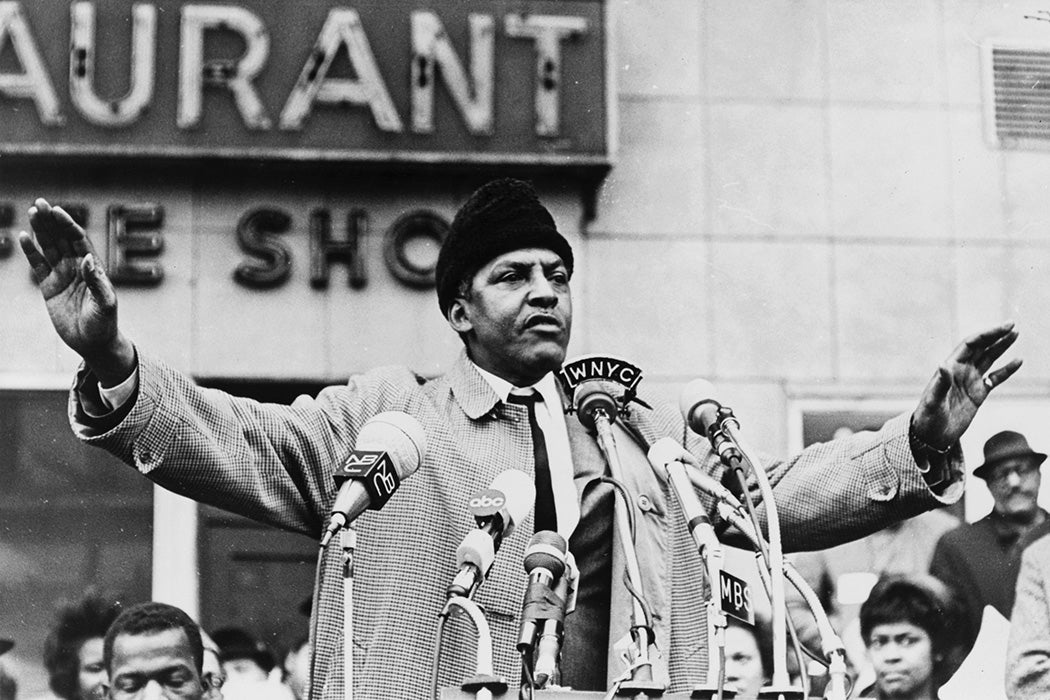Pacifist and civil rights activist Bayard Rustin (1912-1987) was known for his extraordinary organizing abilities. His career began in the 1940s. As scholars August Meier and Elliott Rudwick explain:
Throughout the 1940s, Rustin trained and led groups of nonviolent protesters in actions against segregated restaurants, movie theaters, barber shops, amusement parks, and department stores. […] Throughout these years he travelled incessantly, lecturing to audiences across the country and inspiring countless numbers of young men and women to take action on behalf of social justice.
Two decades before the Freedom Rides of 1961, he was beaten and hauled to the local jail for riding an interstate bus. His crime? Sitting in the second row while black.
In 1947, he helped organize the multiracial Journey of Reconciliation, which challenged the continuing segregation of interstate buses in the South after the Supreme Court, in Morgan v. Virginia, declared such segregated buses unconstitutional in 1946. The Journey became the model for the later Freedom Rides.
Raised a Quaker, Rustin was also supporter of African and Asian independence from colonial powers. He supported Gandhi’s Indian independence movement. In the late 1940s, he had travelled to India to study nonviolence strategy and tactics. As a pioneer in the civil rights struggle, he brought all these skills to advising Martin Luther King, Jr. in the 1950s and 1960s.
Rustin was a controversial figure inside and outside the movement. Biographer John D’Emilio writes that Rustin has been largely left out of the simple story we tell ourselves about civil rights because of “three liabilities.” Rustin was a pacifist, a socialist (and an ex-Communist), and a homosexual. Indeed, throughout the 40s, 50s, and 60s, Rustin was attacked again and again by segregationists, and the national security state, on all three fronts.
The fact that Rustin had served 60 days on a “lewd-vagrancy” charge in California in 1953 was used against him by his enemies. Lewd-vagrancy laws were one of the ways homosexuality was then criminalized. So in a movement deeply concerned with respectability, D’Emilio explains, Rustin made some of his own civil rights peers nervous.
Put all these liabilities together—a communist past in cold war America, a pacifist in an-armed-to-the-teeth national security state, and a homosexual during the years one historian has labeled “the lavender scare”—and one can understand why Rustin would have developed a style of leadership that tended to keep him out of the public eye.
Nevertheless, D’Emilio argues that we need “to acknowledge that the vision and the energy and the skills of radicals were essential to its success, that agitation for racial justice was often most likely to come from those who stood far outside mainstream assumptions in the United States.”
Weekly Newsletter
Of course, there are different generations of radicals. In the 60s, Rustin was seen as too compromising—too willing to work within the establishment—by younger activists in the Mississippi Freedom Democratic Party and the Student Nonviolent Coordinating Committee. But now, more than thirty years after his death, Rustin’s early years are being recognized as part of the long struggle for prison abolition and against racial policing.







